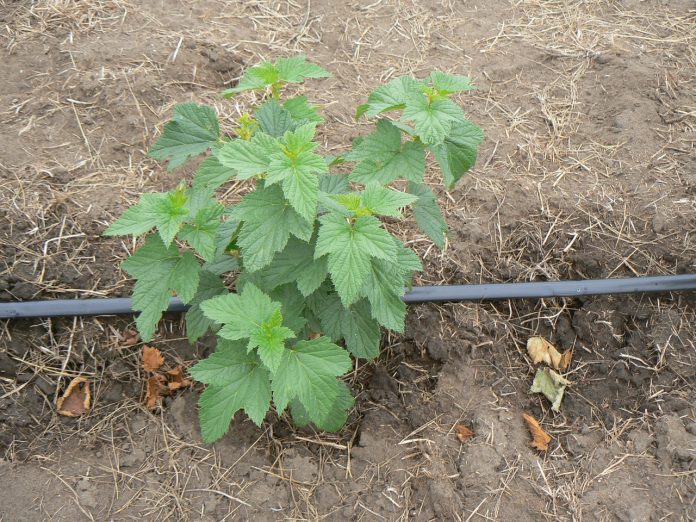Much of the water directed towards plants never reaches them. It is lost to evaporation, runoff or “non-target areas” such as driveways or patios. Evaporation losses are affected by temperature, relative humidity, wind, droplet size and water pressure. We can’t control temperature but wind can be decreased by shelterbelts, trees and shrubs and fencing.
Design: In conventional landscape design, we consider height, colour, texture and season of bloom, but seldom think of the water needs of plants. We often combine plants regardless of their drought tolerance and then water the entire bed to satisfy the needs of those plants that require the most water.
When designing or redesigning your landscape, group plants in “zones” according to their water needs: those with low water needs (such as yucca, lilac, shrub roses), moderate water needs (cranesbill geranium, basswood/linden, dogwood) and high water needs (birch, delphinium, hosta). Once their water needs are considered, arrange them according to design factors such as height, colour and season of bloom. Grouping plants into beds or borders based on their water needs and then watering them accordingly, makes irrigation more efficient. With an automated system, each landscape zone is scheduled as a single unit.
Mulching: A 10-cm (four-in.) layer of organic mulch (e.g. leaves, shredded post peelings, flax shives) spread on the soil surface between plants, conserves water and greatly reduces weeds. It also prevents water splash onto foliage, thus reducing soil borne diseases such as botrytis.
Bowl-shaped depressions: Forming bowl-shaped depressions with mini “dykes” around newly planted trees and shrubs directs water towards the plants’ roots rather than onto adjacent soil.
Timing: Evaporation losses can be reduced by irrigating when it is calm and cool, usually in the early morning. Plants dry quickly once the sun rises, reducing the risk of foliage diseases such as powdery mildew (which proliferate rapidly under humid conditions). It is also a nonpeak time for domestic water use, so municipal water facilities are less likely to be overtaxed.
Angles: A spray directed at a higher angle covers a greater area, but considerably more water is lost to evaporation and wind drift because the water is in the air longer and wind becomes stronger with increased height. The lower the “angle of trajectory,” the less wind drift and evaporation. Higher pressure usually breaks up the stream of water into smaller droplets which are more easily lost to evaporation and wind drift. The older oscillating type sprinklers are one of the worst for water waste.
Moisture sensors and rain shut-off devices: Rain sensors can over-ride prescheduled irrigation systems so they will not operate when there has been sufficient moisture due to rain. An automatic timer on a hose end sprinkler allows you to water a predetermined amount without fear of forgetting to turn off the tap if you’re away. When a predetermined amount of water accumulates in a collector cup, the system is shut off.
In the fall…
Discontinue watering in late September or early October, when the leaves of deciduous trees have begun to colour and drop. This is your signal that they’re beginning to harden off for winter in response to progressively shorter days and colder temperatures. Continuous watering or the application of fertilizer in late fall may slow the hardening off, leaving trees as well as other plants vulnerable to winterkill.
Once all of the leaves have fallen, give them several deep waterings prior to freeze-up. The objective is to allow them to harden off yet enter winter dormancy with ample water in their tissue and the surrounding soil. This reduces vulnerability to late winter and early spring desiccation.
Retired from the University of Saskatchewan, Sara’s most recent book is Growing Fruit in Northern Gardens with Bob Bors. She’s been hosting garden tours for over 20 years – to Great Britain, Ireland, Europe, Turkey and Iceland. Join her for a tour of French gardens this September [Contact Ruth at 1-888-778-2378, www.worldwideecotours.com] This column is provided courtesy of the Saskatchewan Perennial Society (SPS; saskperennial@hotmail.com ). Check our website (www.saskperennial.ca) or Facebook page (www.facebook.com/saskperennial) for a list of upcoming gardening events.


